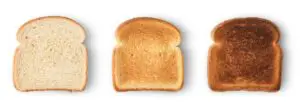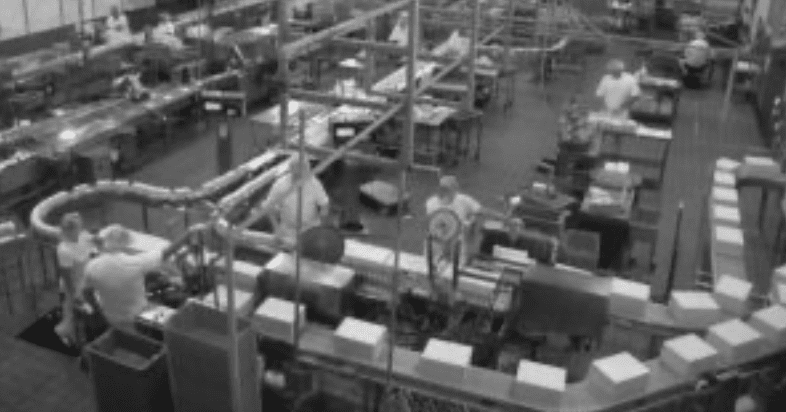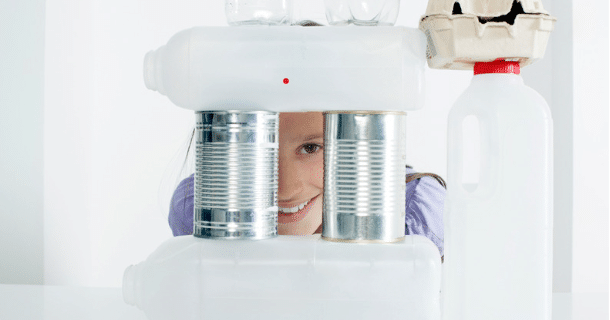Per Class:
- Click pen with 5 or 6 parts (30 per team)
- A stopwatch or smartphone timing app
- Writing materials and paper for collecting data
INTRODUCTION
Industrial engineers design the most efficient, ergonomic ways to make a product or provide a service. In addition to designing methods for new production, they are expert troubleshooters who can evaluate a production process and find ways to improve it. In every sphere you can think of—manufacturing, agriculture, aerospace, banking, IT—industrial engineers are collaborating with company managers and other engineers to improve productivity and profit as well as conditions for the people who do the work.
PREPARATION
Click pens are constructed in many different ways—before buying pens in bulk, check the model to make sure it disassembles easily into 5 or 6 pieces. Count out 30 pens for each team into ziplock bags.
INSTRUCTIONS
- Hold up a functioning click pen and ask students, “How do you think a pen like this is put together in a factory? What actions must happen for it to be built perfectly each time?” Make a list of their ideas.

- If nobody has mentioned it, introduce the term assembly line. Invite students to offer definitions. As needed, explain that products that have different parts get put together by the people or robots working in an assembly line. Each person or robot works on a different step in the process of putting something together.
- Optional: show some photos of human assembly lines that you find through a web search for products that are relevant to your students.
- Ask students why assembly lines might make the work of putting together a large number of pens easier or faster than each person or robot assembling all the parts of a pen themselves.
- Tell students that they will work in teams to design their own assembly lines in order to put together as many click pens as possible in two minutes.
- Give students the specs:
- Your team will have exactly two minutes to assemble as many pens as possible.
- Each pen has to be assembled completely and accurately in order to be counted.
- Each assembled pen must click and write correctly in order to be counted.
- Divide students into teams of five or six.
- Give each team their bag of pens.
- Have each student take a pen apart and put it back together to explore how the pen is assembled. Instruct them to write down the steps they took to assemble the pen and to make sure that it works properly.
- Tell the teams they will design an initial assembly line where each student has an assembly role (or two as needed). If needed as an example, have one team come to the front of the room, and give them each an assembly station and role(s). Have them assemble a pen as an assembly line.
- Have each team figure out what order they think is best for putting together the parts, which student is at each assembly station, and what actions will happen at each station.

- Tell students that they will begin by gathering baseline data on how well their assembly line works. (Explain to younger students that baseline data means gathering information that will help them see if their new ideas for an assembly line are better than this basic one.) Have students disassemble all of the pens in the bag, sorting the pieces into piles for an assembly line.
- Remind students that they will have exactly two minutes to put together as many pens as they can, which means one student in each group will need to be timekeeper in addition to assembler. Give the teams time to complete a first run. Ask each team to check if each pen clicks and writes properly with no missing parts, and then report how many pens they assembled. Have the teams discuss their results, noting what problems they encountered.
- Explain that the next task is to think about what could be improved so that their process of assembling pens is more efficient. They can make any changes they like to the process itself.
- Share the guiding questions to help students consider improvements.
- Have students disassemble all of the pens and get set up with their redesigned assembly line. Give groups time for another assembly line run. Remind students to check all of their completed pens. Ask each team to record their results and assess their latest process. Were they able to make more pens?
- Have groups keep going through this cycle of redesigning their assembly line and testing it out, making sure to check pens at the end and record the results.
- To debrief the activity, find out which team(s) had the most efficient assembly line processes, and discuss with the group about which assembly line processes worked the best.
EXTENSIONS
- To save money and reduce the number of pens needed per team: rather than have each team assemble as many pens as possible in two minutes, have them time how quickly they can assemble 20 (or 15) pens.
- Have the students add a pen with a different color ink. Does their assembly line design work when you have two different color pens?
- Divide the class into engineers and operators. The engineers devise the assembly processes, and the operators follow their instructions. How does communication factor into the efficiency of the process?
- Ask students to conduct a cost analysis. Students will be given a cost per unit for each pen component. They will determine the total cost of making each pen and what each pen will sell for. At the end of each trial, students would factor in the cost of pens not completed and what their profit will be.
- At what step(s) did the pen parts pile up? In other words, where were the bottlenecks?
- Did anyone find themselves idle at any point in the process? How could tasks be changed to keep everyone productive throughout the assembly?
- Was anyone reaching for parts awkwardly? Could positions be changed to make movement easy?
- Were any of the pens not clicking or writing properly—a quality issue? At what point in the process did the problem occur? How are you checking quality?
- Would it help to assemble certain parts before the main assembly? This is known as subassembly. If so, which parts would you put together prior to doing the main assembly?
Pen Factory! is adapted from an activity created by Northrop Grumman industrial engineers for use in their student outreach efforts.










Thank you! Your submission is processing.